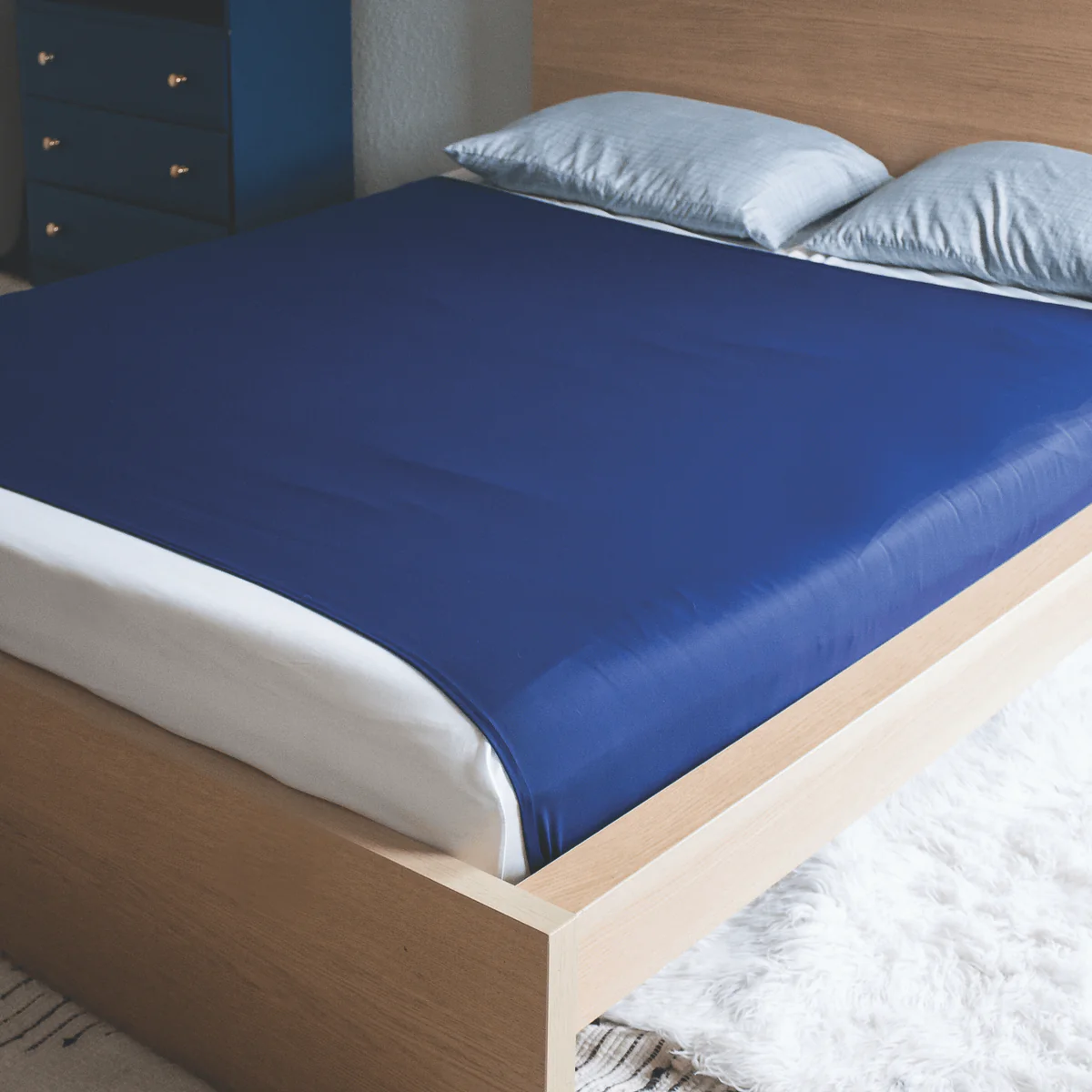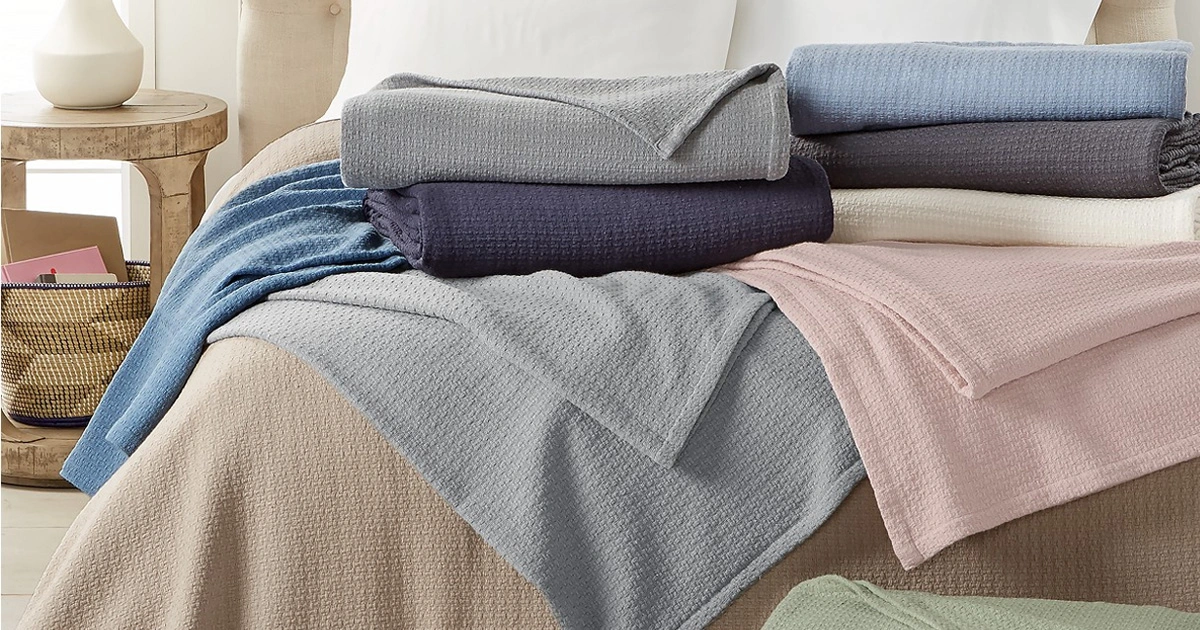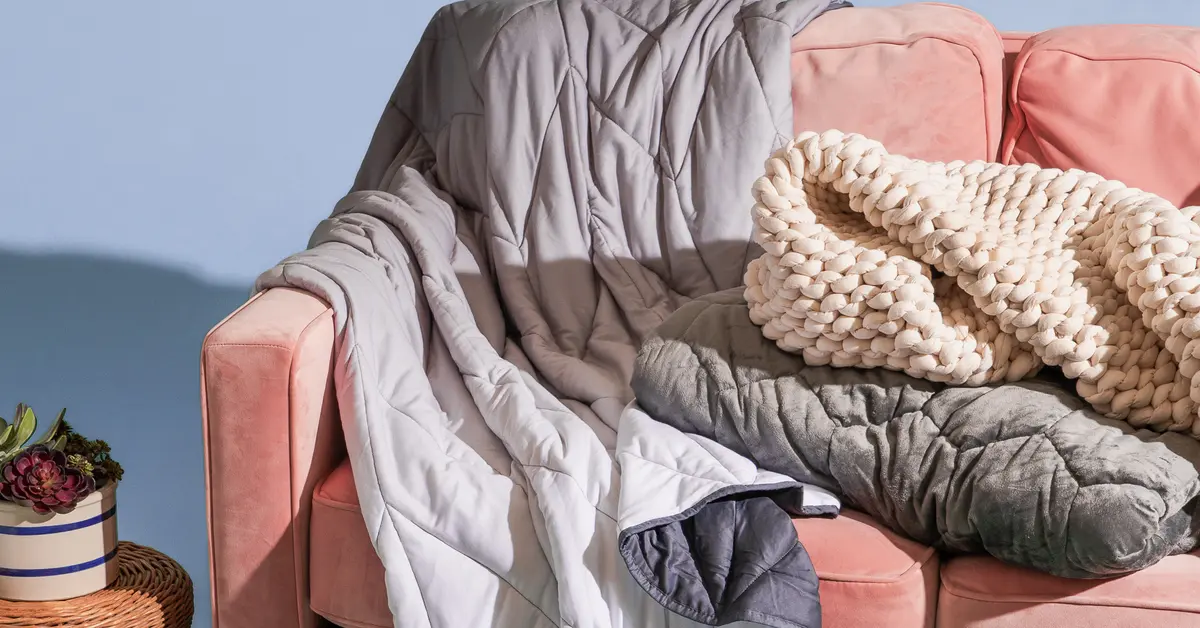Weighted blankets and compression sheets are two popular options for individuals looking for deep-pressure stimulation to promote relaxation and reduce anxiety.
Both of these products aim to provide a sense of security and comfort, but they work in slightly different ways.
What is a weighted blanket?

What do weighted blankets do?
Weighted blankets are designed to distribute weight evenly across the body. The added weight creates a gentle, consistent pressure that can stimulate the release of serotonin and dopamine, which promote feelings of calmness and relaxation.
The pressure from the weighted blanket can also help reduce activity in the nervous system, leading to decreased anxiety and improved sleep quality.
Construction
Weighted blankets are typically constructed with small pockets or squares filled with materials such as glass beads or plastic pellets. These pockets distribute the weight evenly across the body, providing a calming and grounding effect. Some weighted blankets also have removable covers for easy cleaning.
What is a compression sheet?

What do compression sheets do?
On the other hand, compression sheets are made from stretchy fabric that provides a snug fit around the body. These sheets apply a firm, consistent pressure to the skin, similar to the feeling of being swaddled or hugged tightly.
The pressure from the compression sheets can activate the body's proprioceptive system, which is responsible for providing feedback about body position and movement. This stimulation can have a calming effect on the nervous system and help to regulate sensory input, making it easier for individuals with sensory processing issues or anxiety to relax and feel more secure.
Construction
Compression sheets are made from stretchy materials such as spandex or lycra. They are designed to fit tightly around the mattress, creating a snug and supportive surface. The construction of compression sheets is crucial to ensuring that they provide the right amount of pressure without causing discomfort or restricting movement.
Weighted blanket vs Compression sheet

Weighted blankets: pros and cons
Pros
- Improved Sleep: It is scientifically proven that weighted blankets increase the production of the melatonin hormone, which promotes deep relaxation and better sleeping quality.
- Ease of Anxiety: Because the weighted blanket creates a tight, comfortable feeling that resembles being hugged or held by someone, it helps to reduce anxiety by relaxing the brain and nervous system.
- Reduces Movement: Some people toss and turn quite a lot during their sleep, which could decrease the overall quality of their sleep as they might wake themselves up or put themselves in a position that puts a lot of constraint on their pressure points; however, weighted blankets reduce the amount of their movements due to their heaviness.
- Extra Warmth: A weighted blanket can also function as a regular blanket, but it offers extra warmth during cold nights, and if you’re a hot sleeper, there are weighted blankets with breathable material that doesn’t trap heat and prevent sweating.
Cons
- Price Range: The weight blanket’s price range is more on the higher side, and that’s because it includes a complex construction and high-quality material that makes it more expensive than regular blankets.
- Not Safe for Babies: Weighted blankets are not advised for use with children less than three years old or with infants, since they may not be able to breathe properly and feel trapped inside them.
- Harder to Pack While Traveling: While the heaviness of weighted blankets has a lot of advantages, portability isn’t one of them, as it makes the blanket heavier and bulkier than regular ones, which makes them hard to pack and travel with.
Best For
- People with anxiety or insomnia: The deep pressure therapeutic technique used in weighted blankets helps with reducing the heart rate and promotes relaxation, which helps people with anxiety or sleeping disorders fall asleep faster.
- Those who feel cold at night: If you live in a cold climate all year round or you tend to feel colder at night, a weighted blanket will provide the extra warmth you need to feel more comfortable while you’re asleep.
Compression Sheets pros and cons:
Pros of compression sheets
- Joint and Muscle Pain Relief: One of the best features of compression sheets is that they can alleviate the pressure on joints and muscles and reduce any pain associated with them by applying gentle pressure.
- Durability: Compression sheets are a worthwhile investment as they’re usually made from long-lasting materials that extend their lifespan and delay showing any signs of wear.
- Hypoallergenic: Compression sheets are a great option for anyone prone to allergies, as they’re made from hypoallergenic material that resists dust mites and other irritants.
Cons of compression sheets
- Price Range: There is a wide price range for compression sheets depending on their material and construction; however, a high-end compression sheet can come with a high price tag, but it’s still a great investment because of the durability of the sheets.
- Comfort: Some people will probably not like the snug fit sensation of the compression sheets, as it might make them feel trapped and make moving inside them a bit difficult.
Best For
- Restless Sleepers: Due to the deep pressure of the compression sheets, the body decreases the production of the cortisol hormone, which is often associated with anxiety and restlessness.
- Kids with Sensory Issues: Children who struggle with their sensory processing skills frequently exhibit increased sensitivity to movement, sound, and touch. This may cause discomfort and distress in day-to-day interactions. Compression sheets apply a constant, mild pressure to the body, which helps to reduce these sensations.
- People who Sleep Hot: Compression sheets are usually made from breathable material that promotes airflow and regulates the temperature, which makes them a great option for hot sleepers as they prevent overheating and sweating during the night.
Choosing between Compression Sheets and Weighted Blankets
While weighted blankets and compression sheets work similarly, there are a few factors that you need to consider before choosing which one to buy
Temperature Regulation
If you’re a hot sleeper, you might find weighted blankets to be a bit harder to sleep with as they could trap heat.
However, some models are made from breathable material and have good cooling features, but they also tend to be quite expensive. Meanwhile, compression sheets are usually better at regulating the temperature and preventing sweating and overheating.
Claustrophobia
If you’re suffering from claustrophobia, then consider trying both compression sheets and weighted blankets before choosing which one you prefer because both can induce a claustrophobic feeling in different ways, so you need to know which one is more comforting for you.
Body Movement
Compression sheets may be more suitable for individuals who require more freedom to move around during sleep. The elastic material allows for easy movement and does not restrict mobility. This can be particularly beneficial for individuals who tend to toss and turn throughout the night.
Weighted blankets, on the other hand, provide a more cocoon-like feeling and can restrict movement to some extent. This can be beneficial for individuals who have difficulty settling down at night.
Medical Considerations
It is important to consult with a healthcare professional before making a decision. Compression sheets may be recommended for individuals with conditions such as autism spectrum disorder, ADHD, or anxiety disorders. The gentle pressure can provide a sense of security and comfort.
Weighted blankets, on the other hand, may be recommended for individuals with conditions such as insomnia, PTSD, or chronic pain, as deep pressure stimulation can help regulate the nervous system and promote relaxation.
Pressure Level
Weighted blankets provide deep pressure through the weight distributed across the body, while compression sheets apply consistent pressure through the stretchy material that conforms to the body's shape.
Personal Needs
Some individuals may find the gentle pressure of a weighted blanket more soothing, while others may prefer the snug fit of compression sheets.
FAQs
What is the difference between a weighted blanket and a compression sheet?
Weighted blankets and compression sheets offer deep-pressure stimulation but cater to different needs. Weighted blankets are larger and ideal for beds, providing even weight distribution, while compression sheets are smaller and travel-friendly and offer targeted pressure or a hugging sensation. Ultimately, comfort preference dictates the choice; some prefer a tight hug, while others find even weight distribution more soothing.
How do I choose between a weighted blanket and a compression sheet?
There are multiple factors to consider, such as size, material, feel, comfort, and medical considerations, but ultimately, the choice between a weighted blanket and a compression sheet depends on personal preference and individual needs. Consulting with a healthcare professional or occupational therapist can provide further guidance in making the best decision for one's specific circumstances. Try both before deciding whether weighted blankets are good for you or whether compression sheets are a better option.
What’s better for kids: weighted blankets or compression sheets?
Some children may find comfort in the weight of a blanket, while others may prefer the feeling of being wrapped tightly in compression sheets. It’s important to consider that children under the age of 3 shouldn’t use both without consulting a healthcare professional or therapist to determine which option would be most suitable for the child's specific needs.
What are the risks associated with weighted blankets?
Multiple risks could be caused by weighted blankets, and the most significant one is the risk of suffocation or having trouble breathing, so it’s vital to know how heavy weighted blankets are and make sure that the weighted blanket weighs 10% of the body weight of its user. Another risk is trapping heat, which could be an issue for hot sleepers, so if you tend to sleep hot, make sure to purchase a weighted blanket that has excellent cooling features to prevent this occurrence.
Which provides more comfort—weighted blankets or compression sheets?
For those who prefer a more enveloping and cocoon-like feeling, a weighted blanket may be a better option. The added weight can provide a sense of security and promote relaxation. However, for individuals who prefer a lighter touch or require more mobility, a compression sheet may be more suitable. The gentle compression can provide targeted support to specific areas of the body without restricting movement.
Can you wash weighted blankets?
Yes, you can wash weighted blankets. However, it is important to follow the manufacturer's instructions for the specific blanket you have. Most weighted blankets come with a removable cover that can be machine-washed. It is recommended to wash the cover separately on a gentle cycle with mild detergent. As for the inner weighted portion, it is best to spot clean or hand wash it, as machine washing may damage the weights.
Conclusion
Both weighted blankets and compression sheets provide deep-pressure stimulation that can promote relaxation and reduce anxiety. They work by applying pressure to the body but through slightly different mechanisms.
People may choose one over the other based on personal preference or specific needs, and it’s important to consult a healthcare professional to make sure that you’re making an informed decision.
Jessica H.
Jessica is a reviewer, writer, and sleep enthusiast at Sleepiverse. Jessica graduated with her master's degree in Nursing research and education. She is a registered nurse and currently works in the Intensive Care Unit. Since becoming a nurse, Jessica has worked the night shift, which means a disrupted sleep schedule. Knowing she needed to function at her best while caring for patients at night, she spent a lot of time researching how to sleep well with a difficult schedule.


